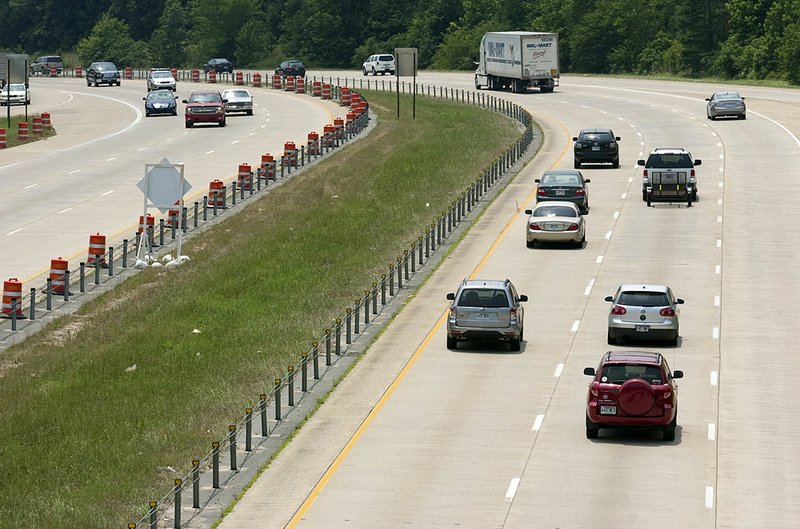LITTLE ROCK — Thirteen sections of interstate totaling nearly 120 miles are good locations for the installation of cable barriers in the medians to reduce the incidence of head-on crashes, the Arkansas Highway and Transportation Department has concluded.
Last week, the state Highway Commission gave its blessing for the agency to install the barriers “as funds became available,” saying the barriers have “proven to be an effective and economical treatment to reduce crossover crashes on divided highways.”
The department’s move comes as the Federal Highway Administration is promoting the barriers as alternatives to the concrete and metal barriers that have been used in the past. Head-on crashes have been an agency focus because they often result in fatalities or severe injuries.
Arkansas has cable barriers in the medians of divided highways at four locations already: Interstate 430 between Colonel Glenn and Shackleford roads, Interstate 40 between Biscoe and Brinkley and on Interstate 55 at two locations. The department is installing another median cable barrier on U.S. 67 north of Jacksonville and soon will start a project to erect a median barrier on Interstate 30 in Benton.
The cable barriers, which are high-tension designs with steel wires attached to lightweight posts, have proven effective wherever they have been installed, said Glenn Bolick, a department spokesman.
“Anywhere where there’s been a cable [barrier] up, there’s not been a crossover accident,” he said. “None.”
State troopers noticed the success of the barriers, too. Capt. Nathaniel Jackson, commander of Troop D of the Arkansas State Police in Forrest City, supervises an area that includes the median cable barriers already installed on I-40 and I-55.
“They’ve been effective,” he said.
In taking a closer look at where to put them, the Highway Department focused its attention on freeway sections that had some common characteristics, according to Scott Bennett, the department’s assistant chief engineer for planning.
A crash analysis was conducted on divided, multi-lane highways with median widths of less than 40 feet, average daily traffic of at least 15,000 cars and trucks, and the scenes of at least one crossover crash involving a fatal or serious injury. None of the routes had unprotected barriers.
The locations included sections of Interstate 30 in Clark and Hot Spring counties; I-40 in Pope, Conway, Faulkner, St. Francis, Crittenden and Pulaski counties; I-430 in Pulaski County and I-540 in Sebastian County.
A crash analysis that included 11 of the 13 sections selected for new barriers, as well as a completed section on I-55 in Crittenden County and one under construction on U.S. 67 north of Jacksonville, showed that from 2007 to 2009, there were 16 median crossover crashes. Seven of them involved fatalities, according to the Highway Department’s traffic safety section.
A separate crash analysis covering most of I-430 in Pulaski County documented 12 median crossover crashes that killed three people. And a small section of I-40 near Arkansas 107 in Little Rock also was recommended for a barrier because it had one median crossover crash resulting in a serious injury, Bennett said in a memorandum recommending the cable barrier installation.
The cable barriers also are less expensive than concrete barriers and guardrails. Cable barriers cost $12.69 per linear foot, according to Highway and Transportation Department figures. Guardrails cost $17.51 per linear foot, but that cost doesn’t include asphalt and shoulder work. Concrete barriers cost $115 per linear foot.
Still, it won’t be cheap to install the median cable barriers on the roughly 120 miles identified. The total price tag is about $24.3 million, or about $203,000 per mile, according to Bennett. The department has no immediate plans to install the cable barriers. They likely will be put in place in separate projects using federal safety money, department officials said.
But once erected, the barriers are simple to maintain, Bolick said. A study of the I-430 cable barrier from August 2004 to March 2005 found the barrier suffered damage in 32 crashes, only one of which required a police report. The damage, which typically required several poles to be replaced, amounted to no more than $5,000, or less than $200 per crash.
Arkansas, Pages 7 on 06/06/2011
